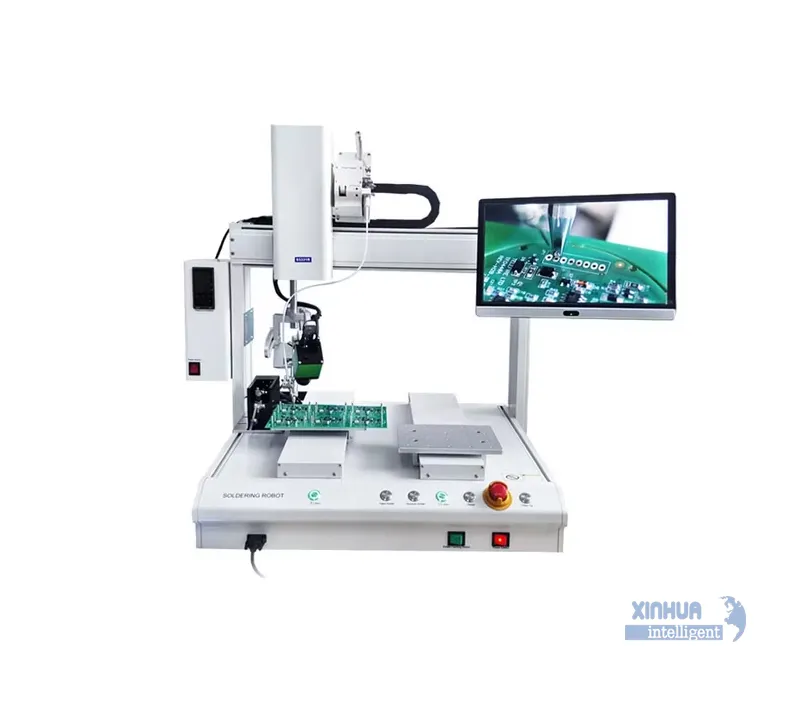How Automatic Soldering Machines Are Used
-
Automated Process: These machines are programmed to carry out soldering operations automatically. They execute tasks that would otherwise be done manually, such as heating the solder and applying it accurately to critical connection points on a PCB.
-
Workflow:
-
Fluxing: The machine first applies flux, a chemical that removes oxides and impurities from the metal surfaces to ensure a strong bond.
-
Preheating: The components and PCB are preheated to a set temperature to enable smooth solder flow.
-
Soldering: The machine then automatically applies solder using a soldering iron, nozzle, or wave, depending on the type of machine, forming consistent and robust joints.
-

Types of Automatic Soldering Machines
| Type | Application |
|---|---|
| Selective Soldering | Pinpointed soldering of specific spots on PCBs |
| Wave Soldering | Soldering all components at once; high volume |
| Reflow Soldering | Common for surface-mount devices (SMDs) |
| Robotic Soldering Arms | Flexible soldering for complex assemblies |
-
Robotic Soldering: Uses programmable robotic arms, sometimes with machine vision, to perform highly accurate and repeatable soldering, ideal for delicate or high-density boards.
Applications in Electronics
-
PCB Assembly: Ensures tiny, intricate parts such as resistors, capacitors, and ICs are reliably attached to PCBs, used in products like smartphones, computers, and consumer electronics.
-
High-Volume Production: Perfect for manufacturers needing fast, reliable, and mass-scale soldering with uniform quality.
-
Complex Assemblies: Utilized in industries where precision is critical, such as automotive electronics, telecom, medical devices, and lighting.
Benefits
-
Precision and Consistency: Minimizes human error and ensures each solder joint is identical and reliable.
-
Productivity: Vastly increases production speed, making it possible to solder thousands of joints quickly and continuously.
-
Cost Efficiency: Reduces labor costs and materials wastage over time, despite a higher initial investment.
-
Customizable Process: Can be programmed for different components, boards, or solder types, increasing flexibility.
Summary Table: Key Features
| Feature | Benefit |
|---|---|
| Automated Precision | Uniform, high-quality soldering |
| High Production Speed | Faster than manual soldering |
| Programmed Parameters | Consistent temp, solder volume, and timing |
| Reduced Labor Costs | Less manual intervention needed |
| Flexible Settings | Accommodates various PCB configurations |
In summary, soldering automatic machine are essential in modern electronics for efficient, reliable, and error-free soldering, from compact consumer devices to critical automotive and medical electronics
